As stated in the documentation, Closure.trampoline() prevents from overflowing the call stack.
Recursive algorithms are often restricted by a physical limit: the maximum stack height. For example, if you call a method that recursively calls itself too deep, you will eventually receive a StackOverflowException.
An approach that helps in those situations is by using Closure and its trampoline capability.
Closures are wrapped in a TrampolineClosure. Upon calling, a trampolined Closure will call the original Closure waiting for its result. If the outcome of the call is another instance of a TrampolineClosure, created perhaps as a result to a call to the trampoline() method, the Closure will again be invoked. This repetitive invocation of returned trampolined Closures instances will continue until a value other than a trampolined Closure is returned. That value will become the final result of the trampoline. That way, calls are made serially, rather than filling the stack.
Source: http://groovy-lang.org/closures.html#_trampoline
However, using trampoline comes with a cost. Let's take a look at the JVisualVM samples.
Non-trampoline use case
Running an example without trampoline() we get a result in ~441 ms
done in 441 ms / 815915283247897734345611269596115894272000000000
This execution allocates ~2,927,550 objects and consumes around 100 MB of memory.

The CPU has a little to do, and except spending time on main() and run() methods, it spends some cycles on coercing arguments.

The trampoline() use case
Introducing the trampoline does change a lot. Firstly, it makes execution time almost two times slower compared to the previous attempt.
done in 856 ms / 815915283247897734345611269596115894272000000000
Secondly, it allocates ~5,931,470 (!!!) objects and consumes ~221 MB of memory. The main difference is that in the previous case a single of $_main_closure1 was used across all executions, and in case of using trampoline - every call to trampoline() method creates:
- a new
$_main_closure1 object
- which gets wrapped with the
CurriedClosure<T>
- which then gets wrapped with the
TrampolineClosure<T>
Only this allocates more than 1,200,000 objects.

If it comes to the CPU, it also has much more things to do. Just look at the numbers:
- all calls to
TrampolineClosure<T>.<init>() consume 199 ms
- using trampoline introduces calls to
PojoeMetaMethodSite$PojoCachedMethodSietNoUnwrap.invoke() which in total consume additional 201 ms
- all calls to
CachedClass$3.initValue() consume in total additional 98.8 ms
- all calls to
ClosureMetaClass$NormalMethodChooser.chooseMethod() consume in total additional 100 ms

And this is exactly why introducing trampoline in your case makes the code execution much slower.
So why @TailRecursive does much better?
In short - @TailRecursive annotation replaces all closures and recursive calls with good old while-loop. The factorial function with @TailRecursive looks something like this at the bytecode level:
//
// Source code recreated from a .class file by IntelliJ IDEA
// (powered by Fernflower decompiler)
//
package factorial;
import groovy.lang.GroovyObject;
import groovy.lang.MetaClass;
import java.math.BigInteger;
import org.codehaus.groovy.runtime.ScriptBytecodeAdapter;
import org.codehaus.groovy.runtime.dgmimpl.NumberNumberMultiply;
import org.codehaus.groovy.transform.tailrec.GotoRecurHereException;
public class Groovy implements GroovyObject {
public Groovy() {
MetaClass var1 = this.$getStaticMetaClass();
this.metaClass = var1;
}
public static BigInteger factorial(int number, BigInteger acc) {
BigInteger _acc_ = acc;
int _number_ = number;
try {
while(true) {
try {
while(_number_ != 1) {
int __number__ = _number_;
int var7 = _number_ - 1;
_number_ = var7;
Number var8 = NumberNumberMultiply.multiply(__number__, _acc_);
_acc_ = (BigInteger)ScriptBytecodeAdapter.castToType(var8, BigInteger.class);
}
BigInteger var4 = _acc_;
return var4;
} catch (GotoRecurHereException var13) {
;
}
}
} finally {
;
}
}
public static BigInteger factorial(int number) {
return factorial(number, (BigInteger)ScriptBytecodeAdapter.castToType(1, BigInteger.class));
}
}
I have documented this use case on my blog some time ago. You can read the blog post if you want to get more information:
https://e.printstacktrace.blog/tail-recursive-methods-in-groovy/



